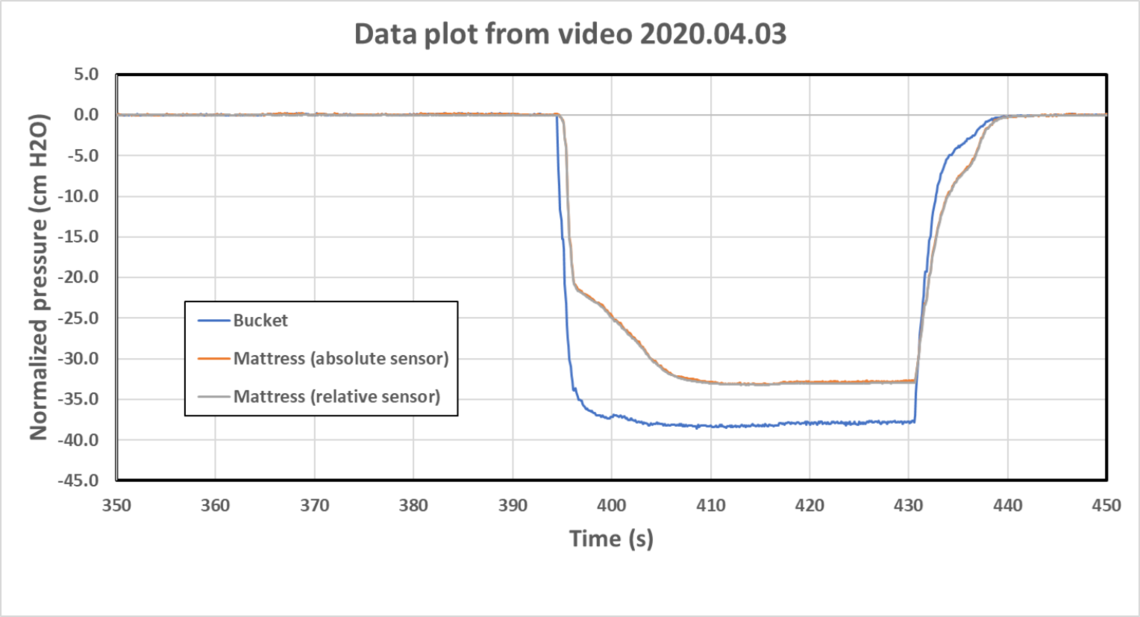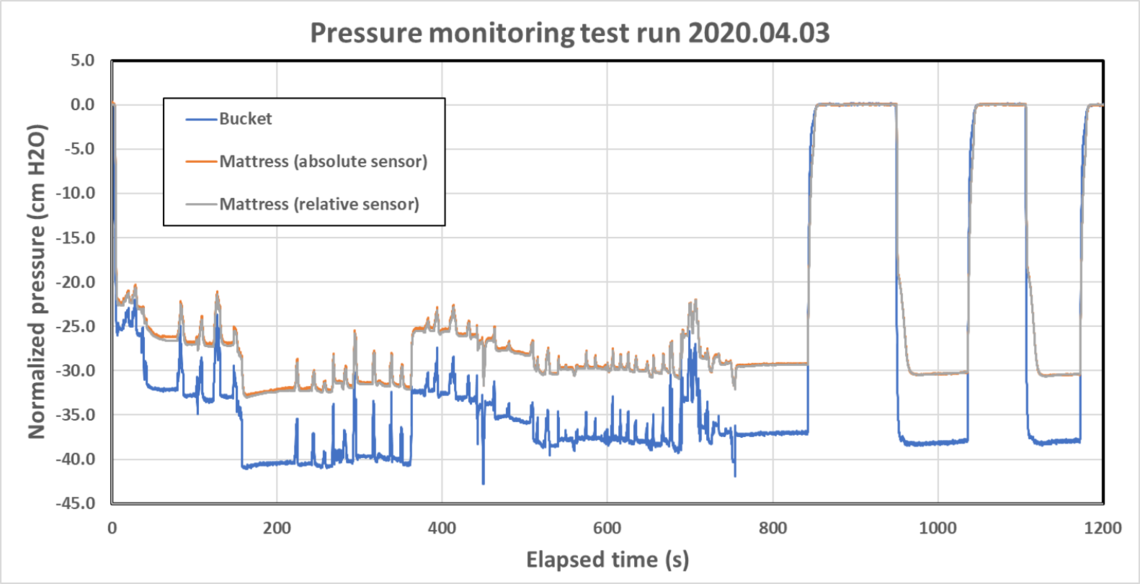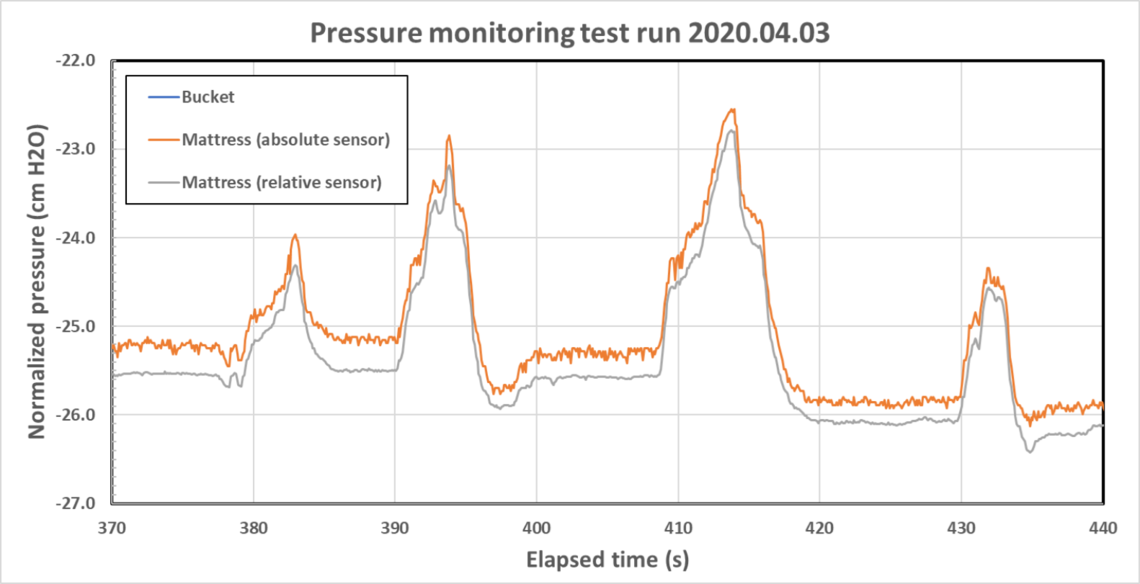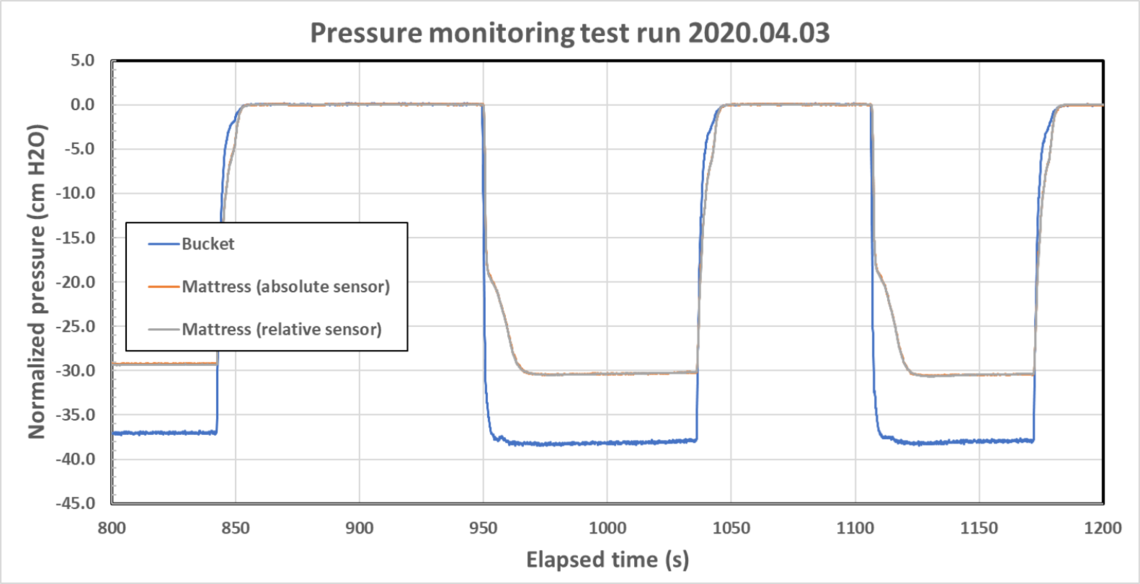EPV update 2020.04.04
Some updates on recent work:
Here is a test of the ability to regulate pressure (no cycling, just stability) and also the duct tape seals on the poly that is used for the chamber.
Here is the data from the sensors during the video. Note the bucket pressure is lower than the pressure in the mattress once everything stabilizes. That indicates a certain amount of leakage in the system, in combination with the long hose between the bucket and the chamber. Ideally the regulator should be immediately adjacent to the chamber. The lag between the bucket & mattress sensors is due to the resistance to air flow out of the mattress as it is slowly compressing.

Here is a fuller dataset taken over 20 minutes

Zooming in on the period from 370 - 440, I was adjusting the tension on the self-actuating relief valve (spikes) and then allowing the pressure to stabilize between runs. You can see from the spikes that it's a bit precarious the way I have it assembled now, the slightest touch pushes the pressure around quite a bit, but you can see that the sensitivity of the controls is excellent (especially considering it's a toilet tank flapper valve on a spring).

Zooming in on the latter part of the dataset, I cycled the vacuum cleaner on and off a few times. The response of the system is slower than it will need to be in use, but that's due to a combination of excessive dead volume (long hoses etc), the mattress expands and contracts, and no pressure-release valve (air flows in through the vacuum once it's off). I think the regulator moved slightly when the pressure relaxed in the first cycle, but you can still see pressure stability is very good.

